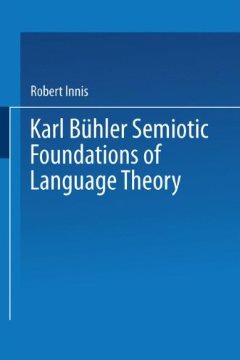Repository | Book | Chapter

(1982) Karl Bühler, Dordrecht, Springer.
At the heart of Bühler’s language theory lies the distinction between the Zeigfeld, or index field, and the Symbolfeld, or symbol field. This distinction points to the autonomous and separate functions of “intuitive pointing and presenting” and the abstract, conceptual grasping of the world. The two fields are “the two sources out of which in every case the precise interpretation of linguistic utterances is nourished” (ST 149), namely, the situation (which as intuitive is determined through deixis in all forms, thus generating the Zeigfeld) and the context (the syntactic matrix in which symbols are to be situated) . In the case of language, Bü hler thought, the radical distinction between these two fields cannot be overcome, nor can one be derived from the other.
Publication details
DOI: 10.1007/978-1-4757-0923-0_3
Full citation:
Innis, R. (1982). The two-field theory of language, in Karl Bühler, Dordrecht, Springer, pp. 19-41.
This document is unfortunately not available for download at the moment.



